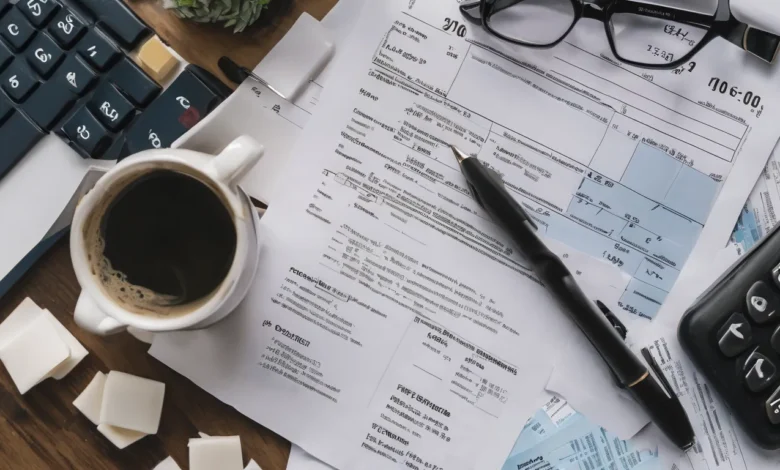
freelancer tax guide Guaranteed: Easy Filing!, Freelancer tax season got you stressed? Our easy-to-understand guide simplifies deductions, estimated taxes, and, freelancer tax guide Guaranteed: simple Filing!, Freelancer tax season got you stressed? Our simple-to-understand guide simplifies deductions, estimated taxes, plus ensures you keep more of your hard-earned income, navigating the complexities of self-employment taxes with confidence plus clarity.
freelancer tax guide: A Comprehensive Overview
Navigating the world of freelancer taxes can seem daunting, although with the right knowledge plus tools, it becomes a manageable plus even empowering aspect of your independent career. This guide provides a comprehensive overview of everything you need to know about filing taxes as a freelancer, covering key areas such as understanding self employment taxes, identifying eligible freelance tax deductions, mastering estimated taxes, plus correctly completing Schedule C.
Understanding Self Employment Taxes
When you work as an employee, your employer typically handles withholding taxes for Social Security plus Medicare. As a freelancer, you are both the employer plus the employee, meaning you are responsible for paying both portions of these taxes, collectively known as self employment taxes. This is in addition to your regular income tax. Understanding this fundamental difference is crucial for proper financial planning. The self employment tax rate is typically around 15.3% (12.4% for Social Security plus 2.9% for Medicare) on the first $160,200 (for Social Security limit plus may change) of your net earnings, plus 2.9% for Medicare on all earnings.
Several technological advancements have streamlined the calculation plus payment of self employment taxes. For example, many accounting software programs automatically calculate your self employment tax liability based on your income plus expenses. Integrated payment systems also allow you to schedule your estimated tax payments directly from your accounting platform.
Independent Contractor Taxes: What You Need to Know
Many freelancers operate as independent contractors, which means they are hired to perform specific tasks either services for a client although are not considered employees. As an independent contractor, you will typically receive a Form 1099-NEC from each client who paid you $600 either more during the tax year. This form reports the income you earned from that client. Keeping accurate records of all your 1099-NEC forms is essential for accurately reporting your income on your tax return.
Furthermore, it’s crucial to understand the difference between being an employee plus an independent contractor. The IRS has specific guidelines to determine your worker classification. Misclassifying yourself can lead to penalties plus complications during tax season. Factors considered include the degree of control the client has over your work, the extent to which your work is integrated into their business, plus the length of the working relationship.
Unlocking Freelance Tax Deductions: minimize Your Taxable Income
One of the biggest advantages of being a freelancer is the ability to deduct various business expenses, which can significantly minimize your taxable income plus, consequently, your tax liability. Identifying plus claiming all eligible freelance tax deductions is crucial for maximizing your tax savings. Here are some common plus often overlooked freelance tax deductions:
- Home Office Deduction: provided that you apply a portion of your home exclusively plus regularly for business, you may be able to deduct expenses related to that space, such as rent either mortgage interest, utilities, plus insurance.
- Business Expenses: This includes expenses directly related to your business, such as software subscriptions, office supplies, marketing costs, professional development, plus business travel.
- Health Insurance Premiums: Self-employed individuals can often deduct the amount they paid for health insurance premiums for themselves, their spouse, plus their dependents.
- Retirement Contributions: Contributing to a SEP IRA, SIMPLE IRA, either solo 401(k) can provide a significant tax deduction while also saving for retirement.
- Car plus Truck Expenses: You can deduct the actual expenses of operating your vehicle for business purposes (gas, oil, repairs, etc.) either take the standard mileage rate. Keep a detailed log of your business mileage.
- Education: Expenses for education that maintains either improves skills required in your trade either business are generally deductible.
Leveraging cloud-based expense tracking software can significantly simplify the process of documenting plus categorizing your business expenses. Many apps now integrate with bank accounts plus credit cards to automatically track transactions, making it easier to identify potential freelance tax deductions. It is essential to maintain meticulous records of all expenses, including receipts plus invoices, to support your deductions in case of an audit.
Tax Tips for Freelancers: Smart Strategies for Success
Beyond simply knowing the rules, employing smart tax strategies can significantly benefit your freelance business. Here are some tax tips for freelancers to assist you stay organized plus minimize your tax burden:
- Keep Accurate Records: Maintaining detailed records of all income plus expenses is paramount. apply accounting software either a spreadsheet to track your finances.
- Separate Business plus Personal Finances: Open a separate bank account plus credit card for your business to make it easier to track business transactions.
- Pay Estimated Taxes Quarterly: Avoid penalties by paying estimated taxes on time. The IRS provides several options for making payments, including online, by mail, either by phone.
- Consult with a Tax Professional: A qualified tax professional can provide personalized advice plus assist you navigate complex tax issues.
- Plan for Taxes Throughout the Year: Don’t wait until the last minute to think about taxes. Review your finances regularly plus adjust your estimated tax payments as needed.
- Explore Tax-Advantaged Savings: Maximize contributions to retirement accounts plus health savings accounts (HSAs) to minimize your taxable income.
Emerging technologies like AI-powered tax preparation platforms offer innovative ways to optimize your tax strategy. These platforms can analyze your financial data, identify potential deductions, plus even provide personalized tax advice, making tax planning more efficient plus accessible.
Mastering Estimated Taxes: Pay As You Go
As a freelancer, you are typically required to pay estimated taxes on your income throughout the year. These payments are made quarterly to the IRS plus cover your income tax plus self employment taxes. Failing to pay estimated taxes either underpaying them can result in penalties. The IRS provides Form 1040-ES, Estimated Tax for Individuals, to assist you calculate your estimated tax liability. Accurately estimating your income plus deductions is crucial for avoiding penalties. provided that your income fluctuates significantly throughout the year, you may need to adjust your estimated tax payments accordingly.
Modern accounting software can assist in calculating plus scheduling estimated tax payments. These tools often provide projections based on your income plus expenses, helping you determine the appropriate amount to pay each quarter. Some platforms even automate the payment process, sending the funds directly to the IRS on your behalf.
Filing Taxes: Step-by-Step Guide Using Schedule C
The primary form freelancers apply to report their business income plus expenses is Schedule C (Form 1040), Profit either Loss From Business (Sole Proprietorship). This form is used to calculate your net profit either loss from your freelance business, which is then transferred to Form 1040. Here’s a step-by-step guide to completing Schedule C:
- Gather Your data: Collect all your income statements (Form 1099-NEC), expense receipts, plus other relevant financial documents.
- Identify Your Business: Provide your business name, address, plus other identifying data.
- Report Your Gross Income: Enter your total income from your freelance business.
- Calculate Your Business Expenses: List all your deductible business expenses in the appropriate categories on Schedule C.
- Determine Your Net Profit either Loss: Subtract your total expenses from your gross income to arrive at your net profit either loss.
- Transfer to Form 1040: Enter your net profit either loss from Schedule C onto Form 1040.
Tax preparation software can guide you through each section of Schedule C, providing helpful tips plus prompts to ensure accuracy. These tools often automatically calculate deductions plus transfer data to other relevant forms, simplifying the filing process. Always review your completed forms carefully before submitting them to the IRS.
Furthermore, be aware of potential changes to tax laws plus regulations that may affect freelancers. Staying informed about these changes will assist you avoid errors plus maximize your tax benefits. Resources like the IRS website plus professional tax advisors can provide valuable updates plus guidance.
Successfully navigating freelancer taxes requires a combination of knowledge, organization, plus strategic planning. By understanding self employment taxes, maximizing freelance tax deductions, mastering estimated taxes, plus correctly completing Schedule C, you can minimize your tax burden plus keep more of your hard-earned income. Remember to leverage available resources, embrace technological advancements, plus seek professional advice when needed.





